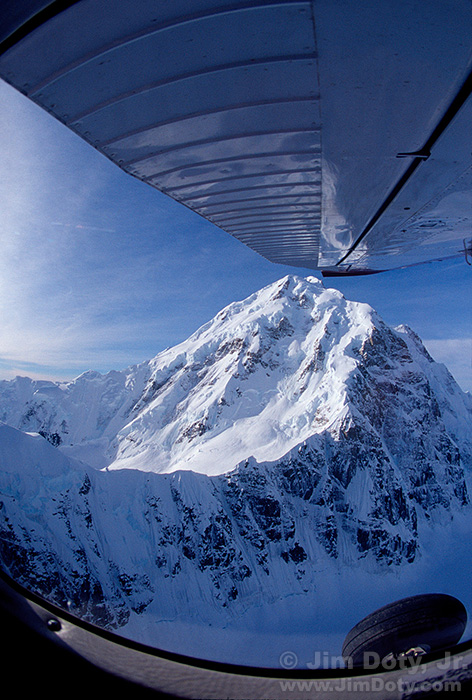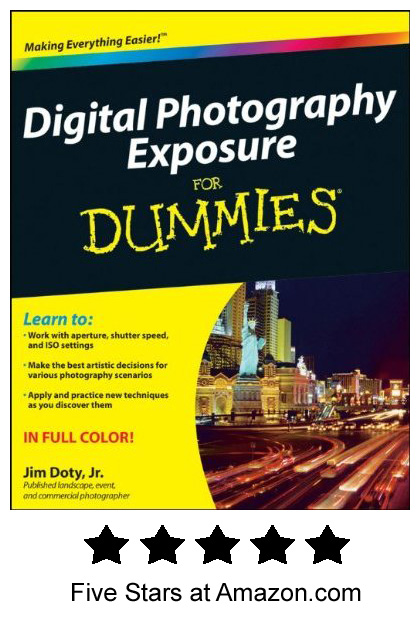UPDATE: A revised and expanded version of this article can be found here.
Metering for scenes with a lot of snow can be tricky since the snow fools the camera meter. I see a lot of winter photos online with gray, underexposed snow, which means the camera meter did what it was designed to do and the camera owner didn’t know how to use exposure compensation. The solution is quite simple provided you know what to do.
Camera meters are designed to make everything a “medium tone”, or in black and white terms, “middle gray” (about half way in between black and white). If you stand close to a black locomotive and take a meter reading, the camera will try and make the locomotive look gray, not black. If you meter white snow, the camera meter will try and make the snow look gray, not white. That is why so many photos of winter scenes have snow that looks too dark, the camera meter did exactly what it was designed to do.
The solution is to use the reflected light meter in your camera and use exposure compensation to make sure the white snow ends up being white (and not gray) in your photo. Point your camera at the brightest white snow in the scene. Make sure your camera only sees bright, white snow. If it sees anything else (blue sky, dark green evergreens), the meter reading can be thrown way off. You may have to zoom your lens to a longer focal length to make sure the camera is only seeing the bright, white snow while you are metering.
Check the meter reading on camera and add about two stops of light (+2 exposure compensation) to what the camera meter is recommending. This will turn the snow from gray to bright white.
You have a choice of adding two stops of light by using a wider aperture or a longer shutter speed. If your camera meter reading of the bright snow is f/11 and 1/1000 second (at ISO 100), you can change the aperture to f/5.6 (two stops more light than f/11) OR you can change your shutter speed to 1/250 second (two stops of light more than 1/1000 second). Don’t change both by two stops or your photo will be seriously over exposed. “Lock in” the new exposure setting so it doesn’t change, recompose to include the rest of your scene and take the picture. For more help with apertures, shutter speeds and thinking in stops, read this article.
It is important that you “lock in” your new exposure setting if you are in an auto-exposure mode, or your camera will create a new meter reading as soon as you recompose to take the picture, throwing off you meter reading in the process. Every camera is a little different so you will need to read your camera manual to learn how to lock in an exposure setting with your particular camera. Sometimes it is simpler to meter the bright snow in the manual exposure mode, change the aperture or shutter speed to add about 2 stops of light, and your new exposure setting is automatically locked in until you change it again manually.
In the photo at the top of this article, you would need to zoom your lens to a longer focal length to meter only the brightest, sunlit snow on the side of the mountain. If the meter sees the snow in the shade, the blue sky, or the plane wing, it will throw off the meter reading. Add two stops of light (+2 exposure compensation), lock in the new exposure setting, zoom back out to see the whole scene, and take the picture. Once you get the hang of it, it is quick and simple to do. Your exposures will be better and so will your photographs.
The exposure latitude of each brand a model of camera is a little different, so you may need to add more or less than 2 stops of light for your snow to look bright and white without burning out (losing texture). The next time you have sunlight on snow, go out and do a little experiment. Add from 1 to 3 stops of exposure compensation in 1/2 stop or 1/3 stop increments to see which photo gives you the kind of “light and bright” snow you want. Depending on your camera model, you will be able to change your aperture and shutter speed in 1/2 or 1/3 stop increments, or both.
The photo above is Mount Hunter, taken on a bush plane flight around Denali (Mt. McKinley) with Greg LaHaie of the Kantishna Air Taxi. More photos from our flight are here. If you are at the west end of the Denali National Park road and it is a good day for flying, book a flight with Greg. The views will be spectacular.
Links
Why Is Exposure So Important? The first in a series of articles covering the basics of exposure with links to the rest of the articles.
Speaking Your Camera’s Language: Aperture, Shutter Speed, and ISO (thinking in stops).
Using Reflected Light Meters, Part One (with a section on exposure compensation).
A comprehensive guide to exposure (everything from the basics to advanced exposure techniques) is in my five star rated book, Digital Photography Exposure for Dummies. You can learn more here and order it at Amazon.com.
Denali National Park – the official NPS site.


